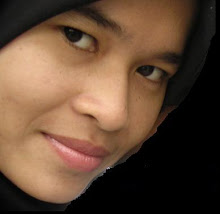
SAJAK LA PLAK.....
BERLARIAN KE PANTAI MENGHAMBAT OMBAK
KU HALAU BADAI JAUH DARI TAMBAK
DALAM KERESAHAN YANG MENGHAMBAT SEJARAH SILAM
TUJUANKU HILANG
JALANKU TIBA-TIBA KELAM
DALAM KELIRU AKU TAK SEDAR SAMA ADA AKU BERJALAN
ATAU HANYA TERKANGKANG MENANTI EHSAN
DAN PADA BURUKNYA SAMPAN
AKU MERAYU PADA LAUTAN BERIKANKU PELUANG
DAN PADA SURAM NYA SENJA
AKU MERAYU PADA LAUTAN BERIKAN KU HARTA
TAK BANYAK… CUMA SEDIKIT YANG AKU MINTA
TAK KU IDAMKAN JERUNG
TAK JUGA KU IDAMKAN HARTA KARUN
CUMA SEDIKIT REZEKI AGAR BERALAS PERUT SEISI RUMAH NANTI
DI CELAH CARIKNYA JARING USANG
AKU MENILAI ERTI NELAYAN
KU CUBA MERUNGKAI DISEBALIK KEKURANGAN DAN KELEBIHAN
KU CUBA TAFSIRKAN PERASAAN…SI PENAKLUK LAUTAN
SAMBIL ITU…
KU PERJELASKAN APA YANG ADA PADA INSAN BERGELAR NELAYAN
DAN PADA SEPAHITNYA KOPI YANG AKU TELAN
BEGITULAH DERITA DAN KEPEDIHAN
YANG HARUS AKU TERIMA
DENGAN TANGAN YANG MASIH BERBAU HANYIR IKAN
KU JALINKAN SEMULA TALI-TALI JARING YANG TERBURAI
DAN DARI SETIAP SIMPULAN NYA KU SEMATKAN
SATU HARAPAN AGAR….
PADA HARI ESOK YANG MENDATANG
LAUTAN TERUS MEMBERIKAN KU KESEMPATAN
PADA AKU DAN SAMPAN…










